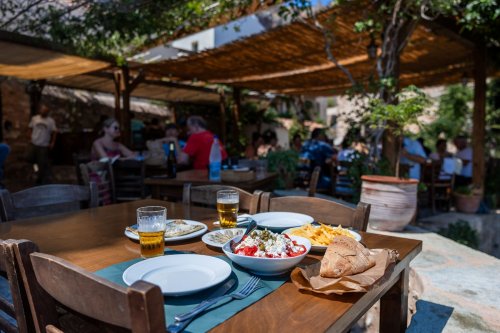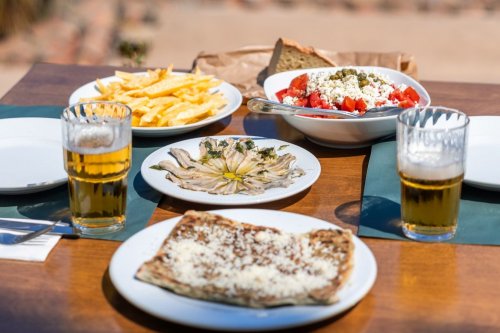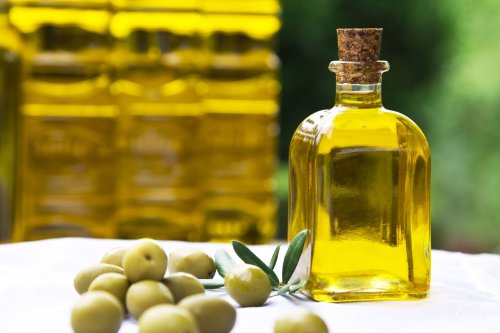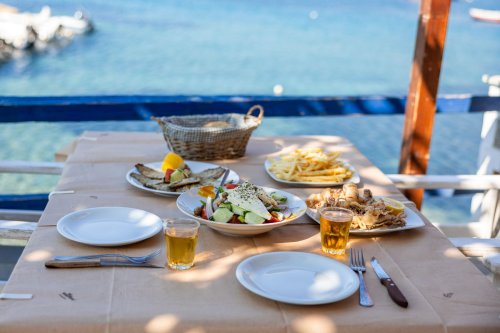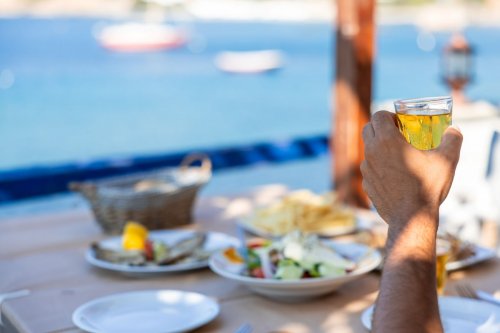Gastronomy in Monemvasia
Pleasure has a name and the aroma of jasmine
Sponsored by Municipality of Monemvasia
If the history of Monemvasia is a like a fresco made of stone and sea, then its gastronomy is a poem written with butter, honey, and plenty of passion.
You, who have decided to pass through the gates of the castle town not only with the curiosity of a tourist, but also with the hunger of the authentic traveler, get ready for an experience that will fill you, move you, and—why not—make you reconsider everything you thought you knew about Greek cuisine.

You start early, in the alleys of Monemvasia that smell of moisture and Easter, and before you even have time to be lost in the cobbled streets, you are greeted by the aromas of the “tsaitia”: humble but delicious thin pies baked in a clay oven with spinach, herbs, and a little feta cheese that are deliciously combined.
Olive oil : the gold of Laconia
In the heart of Laconia, where the soil resembles old sidewalks and the trees seem like silent narrators of centuries, olive oil is not just a food.
It is a legacy. It is heritage. Try it simply, with bread made from local flour, a little caper from the rocks and perhaps a few pickled lupini beans.
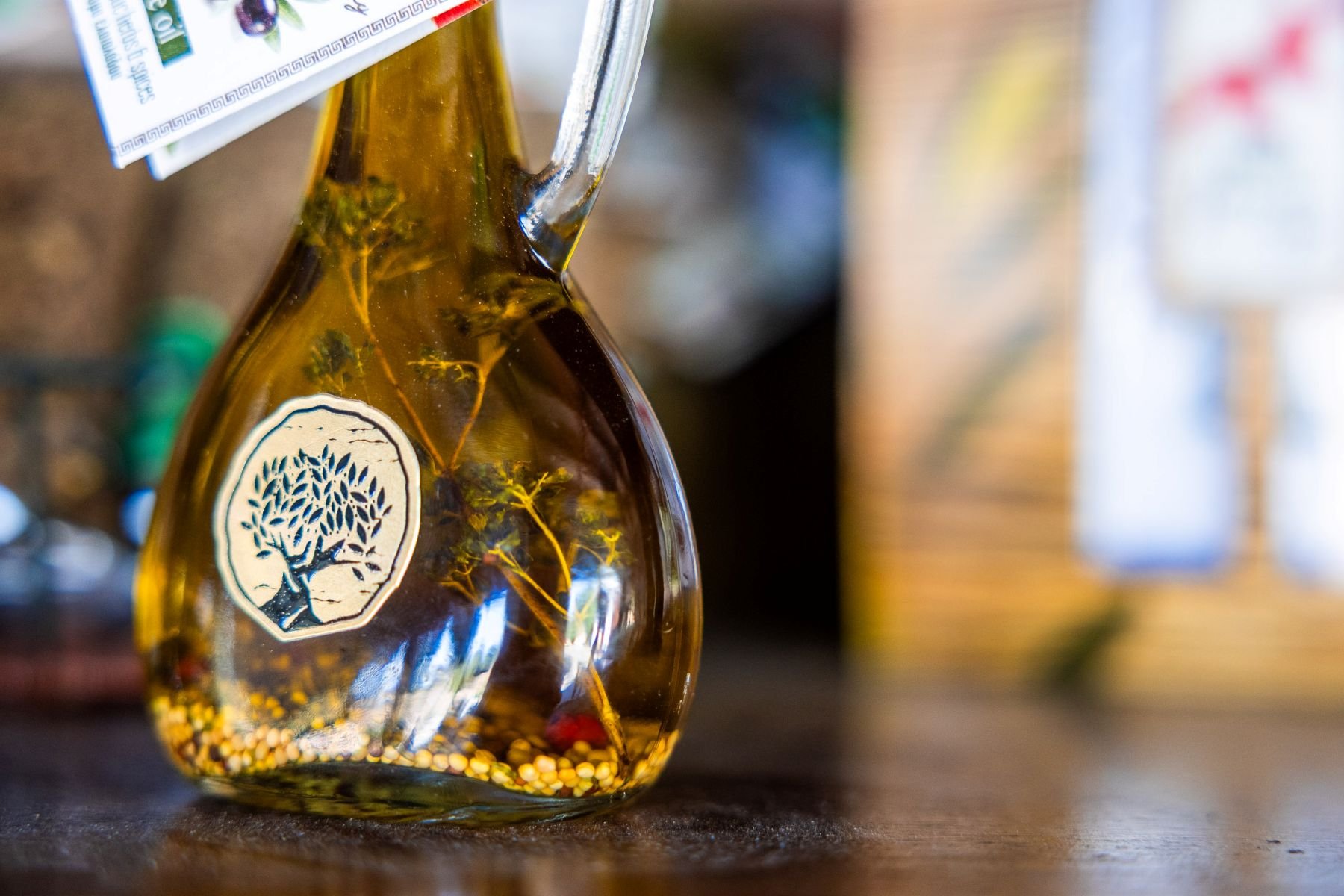
In a guesthouse or a well-stocked grocery store, you are sure to find olive oil tastings. Just say yes. Not only because you will discover the difference between Koroneiki and Athinolia harvests, but because you will experience something between a history lesson and the ritual of ancient olive harvesters.
Goges: simplicity that moves you
It's time for the main course. We're not talking about fried red mullet and grilled sardines – although we appreciate those too– but about the famous goges. They look like gnocchi, but they are something else, something more... laconic.
Handmade and plump, they are thrown into boiling water and as soon as they rise to the surface, they are covered with melted butter and sprinkled with dry myzithra cheese that crunches like snow on stone.
Something simple and yet so moving. You can enjoy them, and if you're lucky, the cook will tell you that she made them the way her grandmother did.
Malvasia wine: the poet's sip
Even if Shakespeare had imagined death as drowning in a barrel of Malvasia wine, you will feel life filling you with every sip. This old wine from Monemvasia was revived in the late 1990s and has been impressing ever since.
Floral, with notes of apricot, peach, jasmine, and a velvety texture, it is an ode to the senses. And it's not alone: Kydonitsa, Mavroudy, and other poetic wine varieties’ names gracefully accompany local dishes and your romantic evenings in the shadow of the castle.
Cheeses that speak the language of the land
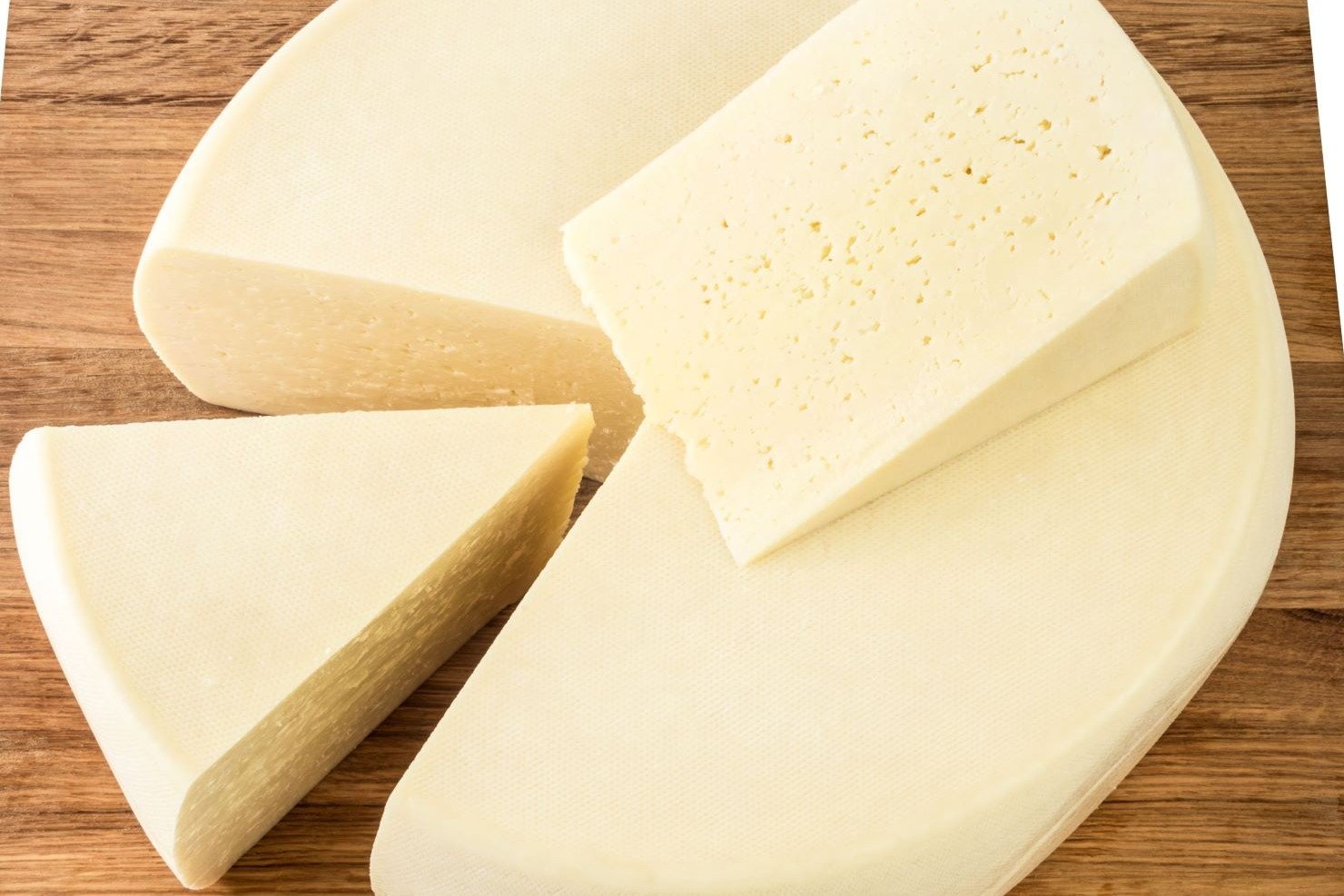
Graviera cheese, Kefalotyri goat cheese, and myzithra are not just simple dairy products. They are a distillation of the landscape and climate. The animals graze on slopes that smell of oregano, thyme, and the sea, and this is reflected in the flavor.
Special mention must be made to Monemvasia’s goat cheese. Monemvasia goat cheese -or as the locals call it, gydotyri- is not just another white cheese.
It is the essence of the Laconic land in every bite. With a creamy yet firm texture and a peppery flavor, with that subtle, spicy finish that awakens the palate and brings to mind memories of summers with the Myrtoon Sea as a backdrop. This cheese is made to stand out.
It is produced exclusively from selected, pasteurized goat's milk, collected daily from free-range goats.
The sweets of Monemvasia: a unique chapter of gastronomy
What follows a meal of goges and wine-aged cheeses? A box of almond cookies, of course! Fluffy, flowery, made from orange blossoms and dreams, these sweets are the antidote to the harshness of the modern world.
And we don't stop there: samousades with sesame and walnuts, rafiolia with thin pastry and almond flakes, honey-coated diples and melitinia with pure honey and the aroma of manousaka. All of them create an epilogue that is more of a promise than a farewell.
Hydromel: the sweet kiss of antiquity

At the end of your journey, or perhaps at the beginning, you will be offered a type of mead – also known as hydromel. It consists of water, three types of honey and patience.
This drink was once the "wedding liqueur," a symbol of sweet life and harmony. You can drink it simply as a tribute to tradition, or to celebrate the beginning of a new love: with Monemvasia.
The gastronomy of Monemvasia is not just good cuisine. It is storytelling, character, and emotional memory. It is local ingredients that marry the seasons to the climate. It is people who know how to wait, cook with patience, and offer with generosity.
And for those of you who passed through the gates of the castle town empty-handed but with a full heart, you will leave with the opposite: bags full of goodies, but a heart that will long for the flavors, the smells, and the voices of Monemvasia.
And you will definitely return. Because some flavors are simply unforgettable.
Discover all the routes and live all the experiences of the municipality of Monemvasia
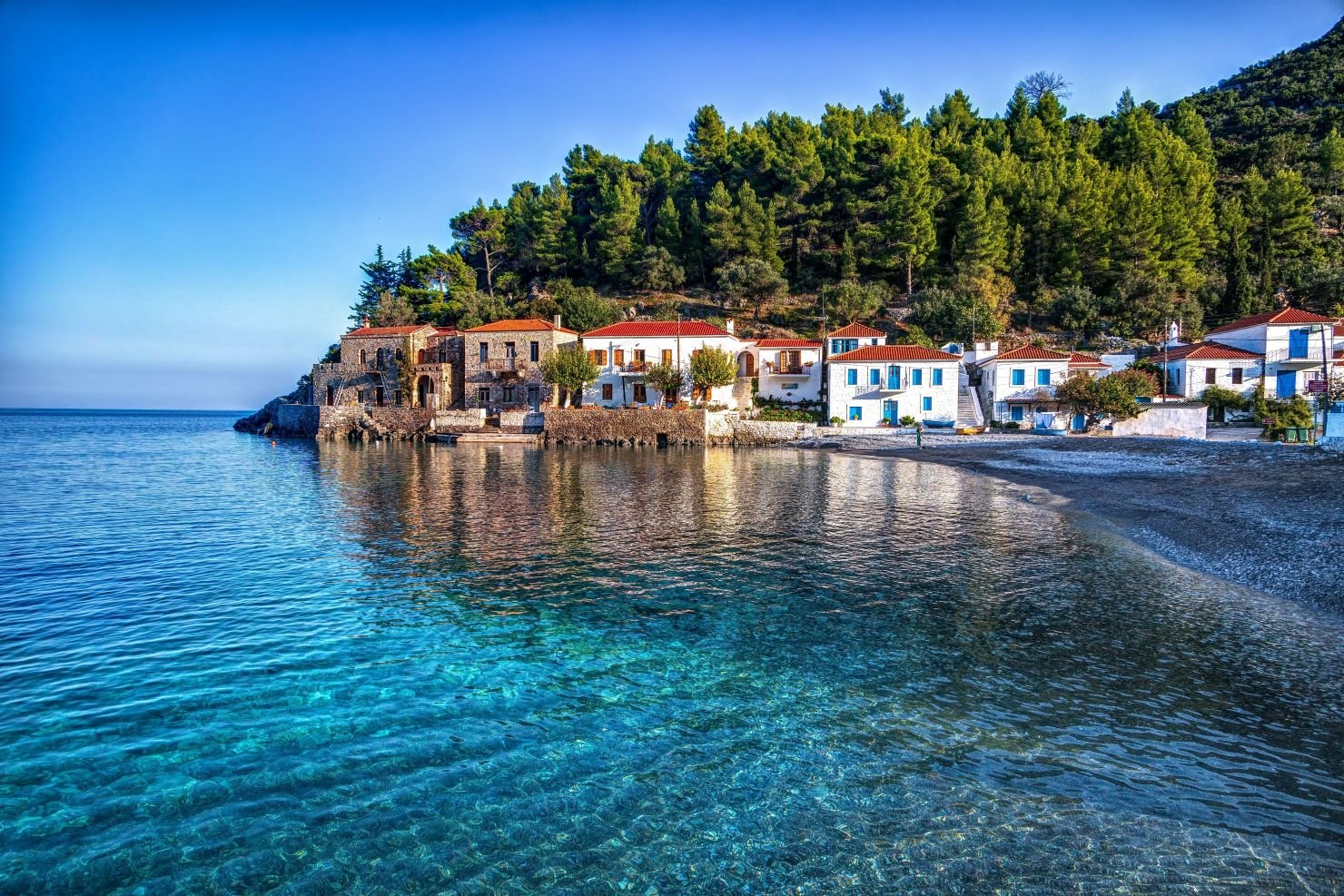
Are you ready for a week full of experiences?

Gastronomy

